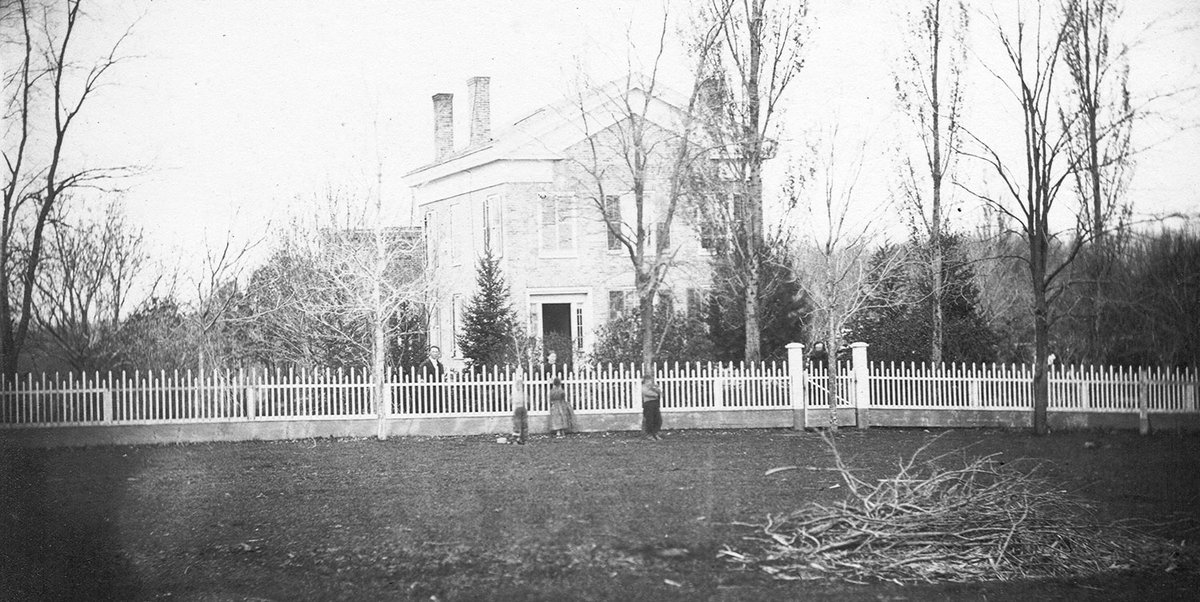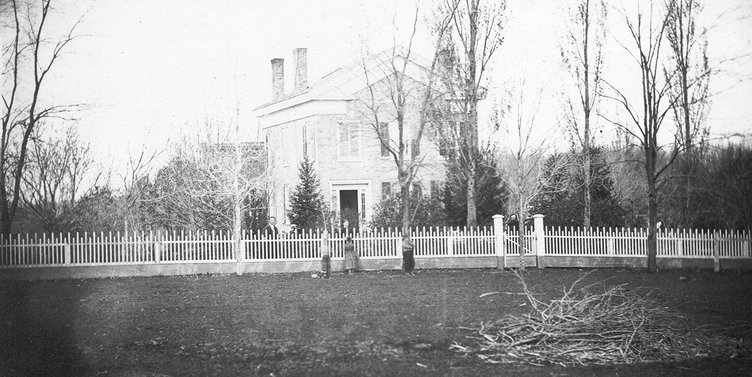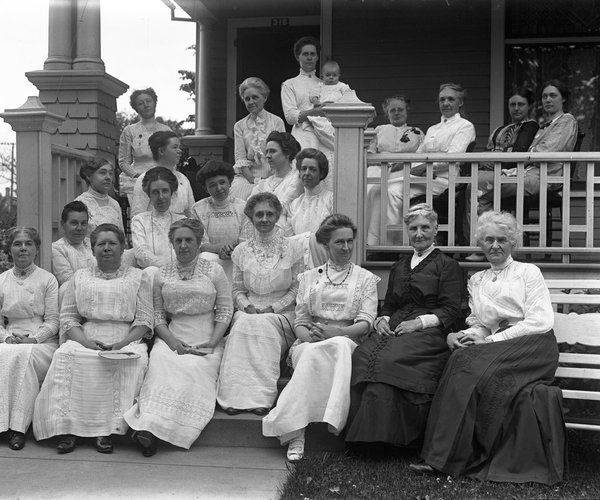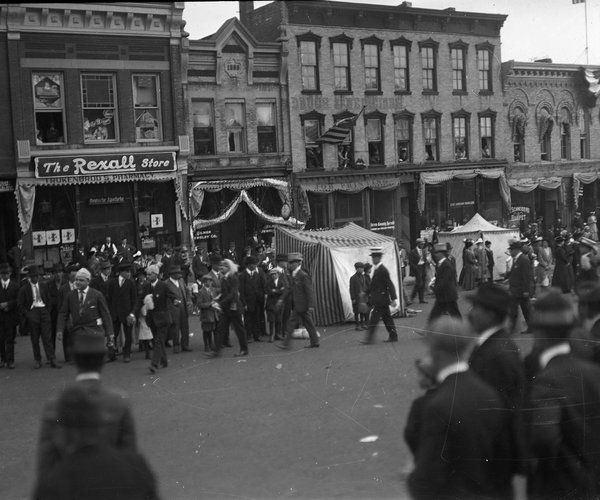After Caroline Bingham donated property for Bingham Park to the city in 1909, the city planned in April 1917 to plant a large potato crop there in April 1917 to help with the nationwide food shortage.
The city council discussed the high price of seed potatoes. “Alderman Adam Blumer pointed out the fact that while considerable expense might be incurred in the preparation of the park for a crop this summer, a part of this expense should be considered as being devoted to the preparation of the park as a city recreation spot, as at present it was in its native state and before it could be made into a park the soil would have to be turned.”
At that time it was left to the street committee to be sure that the creation of a municipal garden would not in anyway interfere with the bequest of the park to the city from the Bingham estate, as well as to select which crops would be planted. “The resolution favoring the municipal garden was passed unanimously by the council.”
The Times shared three days later that Mayor Etter had received consent from Homer Bingham for the use of the park as a municipal garden that summer. Bingham asked that the 22 acres be seeded down to bluegrass the following season. Alderman Fritz lead an objection on the grounds that the expense would be too great for one season. Street Commissioner Ball felt that an immense quantity of potatoes could be raised with a good profit returned to the city. Council members discussed having city prisoners, in addition to the street workers, raise potatoes.
Another three days later, the Times reported that 150 bushels of potatoes had been ordered from the state department of agriculture, enough to plant most of the park. Although there was opposition, it would assure steady work for the street department force. They expected to raise 3,000 bushels of potatoes by fall. All of them would be sold at market price with the money being turned over to the street department. Individuals would be able to purchase their supply before any merchant could purchase any.
It was announced on June 9 that Rev. McLaughlin, of the Universalist Church, would be occupying the Bingham home at 621 14th Avenue starting in July; it had remained empty since Mrs. Bingham’s death in March. “The large brick house has been kept in the best repair and occupying the center of a spacious yard with its old trees and beautiful shrubbery, will make a very comfortable and interesting home for the new and favored occupants.”
The people of Monroe might have been surprised when the Times shared on July 18 that the Bingham heirs had petitioned the council to return Bingham Park to them. Mrs. Bingham had specified in the deed that certain improvements should be made within three years after the donation. That petition was referred to the judiciary committee.
Digging of the potatoes from Bingham Park began October 1 with the yields “turning out splendidly.” City residents had contracted for 1,377 bushels, but it was not known if full delivery could be made.
The city finished digging the potatoes on November 3 with a crop of about 1,700 bushels realized from 15 acres. The potatoes were sold, for the most part, to the poor people of the city who benefited from the price of $1 per bushel. The city made a net profit of more than $300 on the enterprise “which was conducted under the supervision of Alderman Herman Keel.”
The Bingham heirs, through their attorney J. D. Dunwiddie, presented to the council at its regular meeting on February 5, 1918 that a quit claim deed be given to them for the Bingham Park property by March 1. “The city engaged a landscape expert a few years ago to look over the property and estimate the cost of improving it as a park. The expert stated that a system of boulevard drives, flower beds, artificial pond, and other park improvements would cost in the neighborhood of $25,000” and the matter of improvement was then dropped by the council. If the quit claim deed was not received, it was understood that a court action would be started. The petition was again referred to the judiciary committee.
The city must not have felt threatened as the work of planting potatoes in the park was started again in early April. Seed potatoes for late potatoes had been saved from the previous crop and were to be planted later.
It was then reported on April 22 that legal action had been brought by the heirs. The city had 20 days “in which to file its answer to the suit in circuit court.” The council voted 6 to 2 on October 15 to “deed back to the Bingham heirs the property generally known as Bingham Park.” Aldermen J. J. Schneider and M. C. Durst “opposed the return of the property without some compensation to the city. This action ended a prolonged debate on the question and will also stop procedure which had been started in circuit court against the city.”
The property was deeded back to the three previously named Bingham heirs on October 17, 1918. It was executed by Mayor John T. Etter and William Dunwiddie, city clerk.
An article in the Monroe Evening Times on September 25, 1922 still referred to that land as Bingham Park. It was reported that Rinehart Splinter, an employee on the Willis Ludlow farm, uncovered an ancient Spanish coin while digging potatoes in the park. “The coin was made during the reign of Carlo Carolus, who reigned from 1786 to 1808. The coin is dated 1806. It has a hole at the top and was probably worn as a watch charm.” The TurnVerein had previously held annual meetings there and the cavalry had been stationed there. It might have belonged to one of those people.
Bingham Park was located on a portion of what is now Twining Park. You now know why that area no longer bears the Bingham name.
— Matt Figi is a Monroe resident and a local historian. His column will appear periodically on Saturdays in the Times. He can be reached at mfigi48@tds.net or at
608-325-6503.





